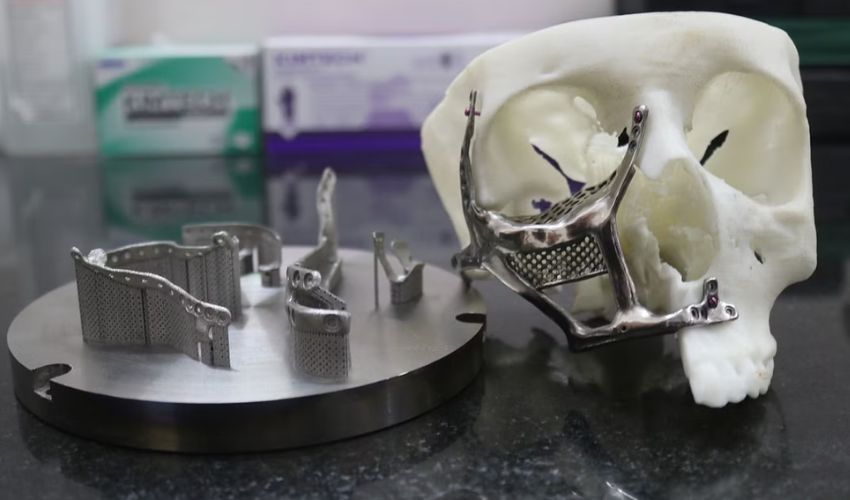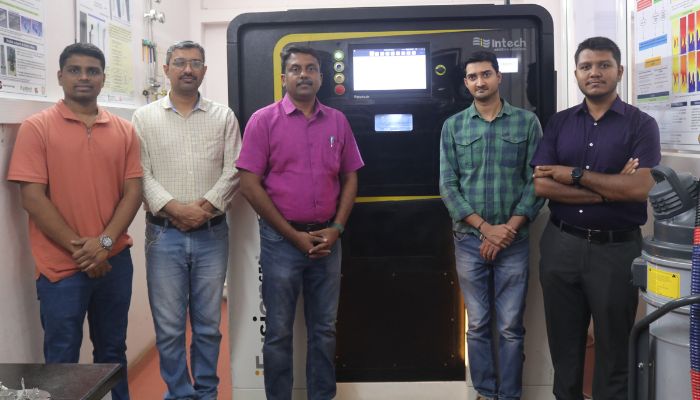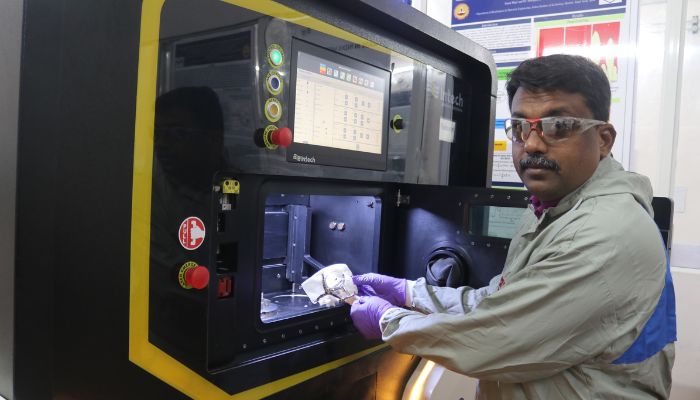3D Printed Facial Implants to Revolutionize Black Fungus Treatment in India

Around the world, we have already seen the viability of additive manufacturing technologies for the creation of implants. This is especially the case for those living in regions that may be less economically prosperous, with citizens who may have less access to affordable, advanced healthcare. It is in these areas that 3D printing is putting itself forward as a viable way to creation customizable, low-cost implants that can truly revolutionize healthcare. Most recently, this has been seen in India where researchers from the Indian Institute of Technology Madras (IIT Madras) have partnered with ZorioX Innovation labs, a startup founded by dental surgeons in Chennai, to create 3D printed, metal face implants for patients suffering from black fungus disease in the country.
According to the CDC, black fungus disease, known officially as Mucuormycosis, “is a serious but rare fungal infection caused by a group of molds called mucormycetes. These fungi live throughout the environment […] in soil and in decaying organic matter, such as leaves, compost piles, or rotten wood.” The disease can be contracted by coming into contact with the fungal spores in the environment, for example after breathing them in. However, the CDC notes that “These forms of mucormycosis usually occur in people who have health problems or take medicines that lower the body’s ability to fight germs and sickness.” For example, the disease can occur in patients with AIDS or uncontrolled diabetes.

The IIT Madras team with their metal 3D printer
Moreover, it has started becoming a serious concern in India post-COVID, with about 60,000 mucormycosis cases already registered, leading to a growing need for face reconstruction in the country. Starting in 2021, medical personnel started seeing a resurgence of mucormycosis, previously considered a relatively rare fungal infection. The cause seems to have been the immune suppression that occurs during a COVID infection. And the symptoms can be devastating.
Though these can differ depending on where exactly in the body the fungus is growing, common black fungus symptoms include shortness of breath and chest pain, swelling on one side of the face, sinus congestion and, most relevant in this case, black lesions on your nose and inside your mouth. Treatment usually involves taking strong, prescription antifungal medications, but if the disease has been left long enough or is severe, removal of the infected or dead tissues, including entirely taking out parts of a patient’s nose or eyes, is the only remedy. But this can lead to disfigurement and the need for full facial reconstruction. This is where this project comes in, including the #Right2face movement from IIT Madras and ZorioX Innovation Labs, which will give this implants free of cost to patients who cannot afford treatment.
Dr. Karthik Balaji, CEO, ZorioX Innovation labs, commented, “Post-Covid there has been an increase in number of black fungus cases. To save the lives of the patient, a lot of facial bones had to be removed. These patients are mostly breadwinners of the family and are now confined within four walls because of their facial deformity. #Right2face movement is aimed to help these needy patients in association with the oral and maxillofacial surgeons to restore the faces and give them back their smile.” Indeed, already 50 implants have been done on patients from what a press release refers to as economically-weaker sections of India.
Using 3D Printing to Create Facial Implants for Black Fungus Patients
But how exactly will this process work? Well, in fact, it will be similar to many of the other implant or prosthesis initiatives we have seen around the world. Especially those that have been developed for more rural areas or those will less access to affordable healthcare. Dr. Murugaiyan Amirthalingam, Associate Professor, Department of Metallurgical and Materials Engineering, IIT Madras, explained, “Using unique in-house algorithms, a patient’s MRI/CT data is converted to printable CAD format and custom implants are printed from medical-grade titanium using an indigenously-built laser powder bed facility in IIT Madras. This #Right2Face initiative aims to help poor and needy patients with patient-specific custom maxillofacial implants to treat black fungus patients.”

Each facial implant is made by the IIT Madras researchers using a metal laser powder bed solution
Dr. Amirthalingam expanded on the decision to turn to 3D printing specifically, stating “Additive manufacturing (3D printing) has already emerged as a viable and cost-effective, net shape manufacturing process for low volume production of complex body implants with specific custom-made designs. Extensive research activities are already being carried out in IIT Madras to commercialize this technology for printing patient-specific implants in stainless steel, Ti-6Al-4V and Co-Cr-Mo alloys.”
Considering that the work is mainly being used to help lower-income areas as a viable alternative to full facial reconstructive surgery, the cost and personalization that 3D printing enables were both key benefits for the IIT Madras researchers. Furthermore, it seems that the IIT Madras team is particularly excited by the possibility to print an implant that exactly matches a patient’s face. You can find out more in the press release from the Press Information Bureau for the region of Chennai HERE.
What do you think of these 3D printed face implants to help patients suffering from Black Fungus? Let us know in a comment below or on our LinkedIn, Facebook, and Twitter pages! Don’t forget to sign up for our free weekly Newsletter here, the latest 3D printing news straight to your inbox! You can also find all our videos on our YouTube channel.
*All Photo Credits: IIT Madras






